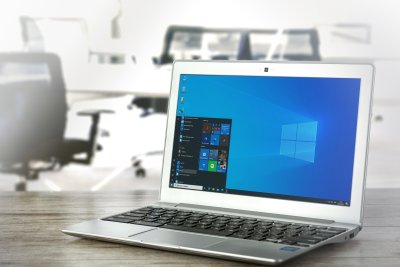As a long-time Windows user, I have seen the operating system evolve over the years. However, in my opinion, it took a downward turn with the release of Windows 8. And with the later versions of Windows 10, it has become completely unusable in its original form. Despite my dislike for it, I was forced to upgrade to Windows 10 Enterprise LTSC 2019 when support for Windows 7 ended. But even that was not enough to make me happy, so I had to manually tweak it. And now, with the recent forced upgrade to Windows 10 Enterprise LTSC 2021, I have once again improved it as good as possible. Here's what i did.
Starting with Windows 10 Enterprise LTSC 2021 instead of regular Windows 10
Windows 10 Enterprise LTSC (Long-Term Servicing Channel) is a version of Windows that is designed for enterprise and embedded systems. It doesn't come with bloatware like the app store or OneDrive, making it a lighter and more streamlined version of Windows 10. I highly recommend using LTSC instead of the regular version.
Start Menu Transformation
The start menu is one of the most significant changes in Windows 10, and not everyone is a fan of it. To bring back the beloved Windows 7 start menu, I installed Open Shell Menu, a fork of Classic Shell Menu. It is a free and open-source software that allows you to customize the start menu to your liking.
Disabling Automatic Updates
One of the most frustrating things about Windows 10 is the constant automatic updates. Not only do they disrupt your work, but they also take up a considerable amount of bandwidth. To disable automatic updates, follow these steps:
1. Press Windows + R to open the Run dialogue box.
2. Type 'regedit' and hit Enter to open the Registry Editor.
3. Navigate to the following key: HKEY_LOCAL_MACHINE\SOFTWARE\Policies\Microsoft\Windows\WindowsUpdate\AU
4. Right-click on the AU key and select New > DWORD (32-bit) Value.
5. Name it 'NoAutoUpdate' and set its value to 1.
6. Restart your computer for the changes to take effect.
Disabling Automatic Driver Updates
Apart from Windows updates, Windows 10 also automatically installs driver updates, which can sometimes cause compatibility issues. To disable automatic driver updates, follow the same steps as above, but name the DWORD value 'ExcludeWUDriversInQualityUpdate' and set its value to 1.
Disabling Windows Drive Encryption
Windows 10 by default enables encryption on all drives using BitLocker. While this may seem like a good security measure, it can cause problems if you ever need to recover your data. To disable it, follow these steps:
1. Press Windows + R to open the Run dialogue box.
2. Type 'regedit' and hit Enter to open the Registry Editor.
3. Navigate to the following key: HKEY_LOCAL_MACHINE\SOFTWARE\Policies\Microsoft\FVE
4. Right-click on the FVE key and select New > DWORD (32-bit) Value.
5. Name it 'EncryptionPolicy' and set its value to 0.
6. Restart your computer for the changes to take effect.
Note: For those who do not want their drives to be encrypted by default, avoid buying a computer with SED (Self Encrypting Drive) HDDs or SSDs. These drives have built-in encryption, so there's no need for additional encryption from Windows.
Disabling Windows Defender Scanning Archives
Windows Defender is the built-in antivirus software in Windows 10, and it can be quite aggressive when it comes to scanning for viruses. By default, it scans all archived files, which can lead to problems like false positives and deleted files. To disable this, follow these steps:
1. Press Windows + R to open the Run dialogue box.
2. Type 'regedit' and hit Enter to open the Registry Editor.
3. Navigate to the following key: HKEY_LOCAL_MACHINE\SOFTWARE\Policies\Microsoft\Windows Defender\Scan
4. Right-click on the Scan key and select New > DWORD (32-bit) Value.
5. Name it 'DisableArchiveScanning' and set its value to 1.
6. Restart your computer for the changes to take effect.
Temporarily Disabling Windows Defender
In the LTSC 2021 version, the software 'Defender Control' no longer works, leaving no option to disable Windows Defender temporarily. To solve this issue, I have written a program that can be downloaded here for free. It will temporarily disable Windows Defender until you decide to revert this change.
Conclusion
Thanks to these tweaks, it is possible to still use Windows 10 but keep in mind that Windows 10 is a closed-source black box that usually doesn't respect the user's choices and privacy. So, even after making these changes, Windows may still ignore or revert them. That's why the only real solution is switching to linux as ones primary operating system which is exactly what i did (Q4OS Plasma). Also make sure to never connect a drive containing important files to a computer running Windows 8/10/11. I hope being able to completely ditch Windows at the time I purchase my next system, and I encourage everyone to do the same. With Linux, you have more control over your operating system and can customize it to your liking without any restrictions. So why not give it a try? Trust me; you won't regret it.


Recommended Comments
There are no comments to display.